Mastering the Cessna 172 Cockpit: A Pilot's Guide
Mar 27, 2025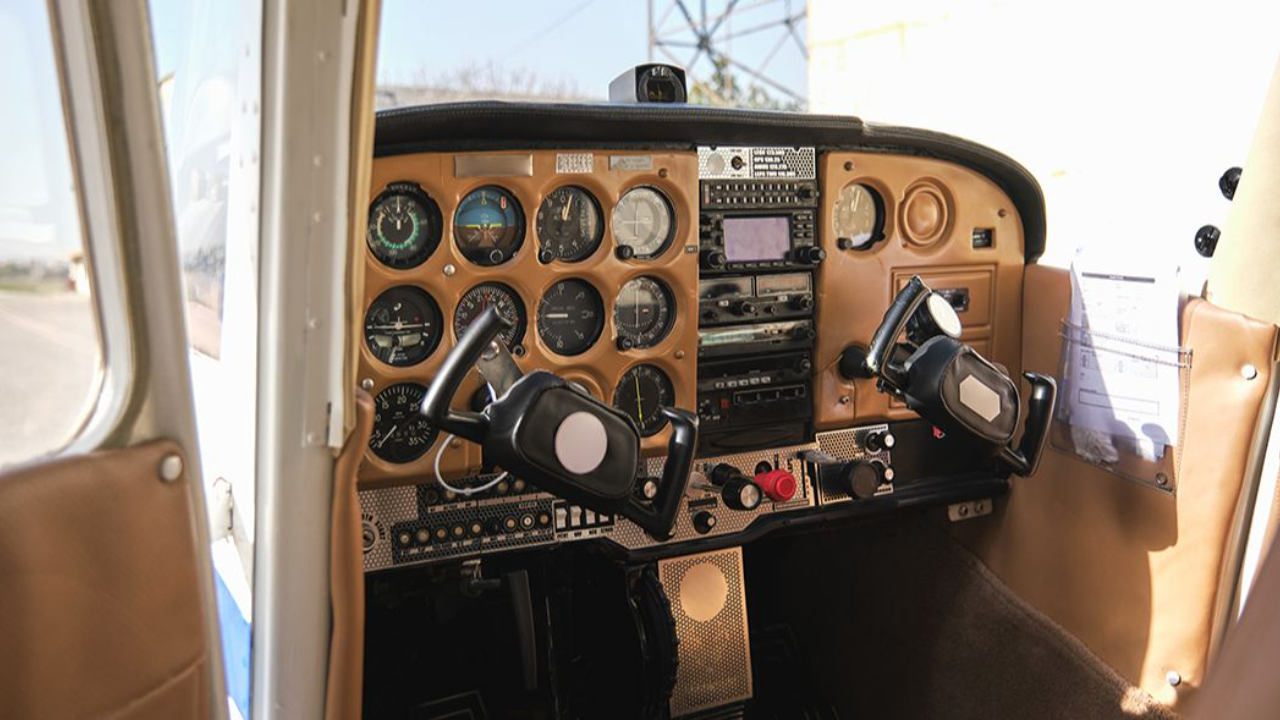
The Cessna 172 cockpit includes essential instruments and controls needed for safe flight. This guide explains how each component functions, helping you navigate and control the aircraft effectively.
At Flight Nerd Air Force, we’re your go-to source for mastering aviation. Whether you're exploring the Cessna 172's performance, comparing it to aircraft like the Piper Archer, or learning about fuel efficiency, our expert community is here to guide you.
Join us for in-depth insights, training resources, and tips from pilots with over 20 years of experience. Start your flight journey today with Flight Nerd Air Force!
Primary Flight Instruments
Essential Primary Flight Instruments Every Pilot Must Know
-
Airspeed Indicator
-
Attitude Indicator
-
Altimeter
-
Turn Coordinator
-
Heading Indicator
-
Vertical Speed Indicator
The heart of the Cessna 172 cockpit is the “six-pack” which is the configuration of primary flight instruments. These are the tools of the trade to help you control the airplane. The six-pack consists of airspeed indicator, attitude indicator, altimeter, turn coordinator, heading indicator and vertical speed indicator - each is critical to control the airplane at any phase of flight.
Pilots use these primary instruments at different parts of their flight. From climbing to cruising altitude and flying through overcast to setting up for a safe landing - the instrument readouts give you the information you need to make good decisions and fly smooth.
Airspeed Indicator
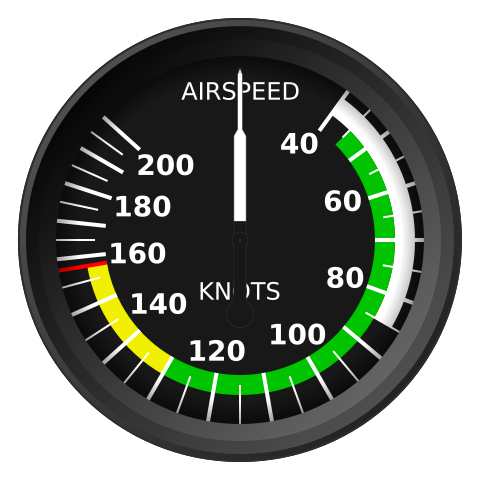
The Cessna 172 has an airspeed indicator as its primary flight display. This instrument calculates airspeed by measuring the pressure difference between pitot and static sources. The resulting differential pressure shows airspeed in knots (KIAS) which is critical for flying at safe speeds.
When an aircraft approaches stall speed its wings can no longer produce enough lift and the aircraft will descend or stall. Pilots need to know and understand airspeed readings to prevent these dangerous situations from happening so each flight stays safe and controlled.
Attitude Indicator
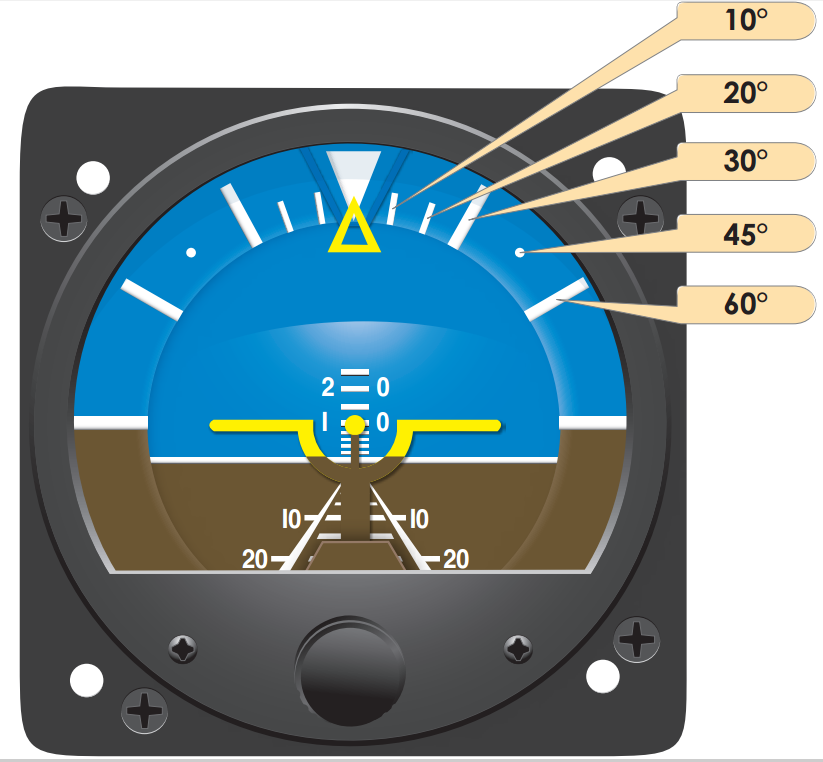
The attitude indicator is another important instrument in the Cessna 172 cockpit. It shows the aircraft’s orientation to the horizon, the sky, ground and a symbolic aircraft. This instrument has marks at -5°, -10°, -15°, +5° and +10° for pitch and 0°, 10°, 20°, 30°, 60° and 90° for bank.
Gyroscopes in the attitude indicator, driven by electric motors or a vacuum pump, keep the readings accurate so pilots can maintain the correct attitude.
The Cessna 172 max altitude of approximately 14,000 feet also plays a role in determining the aircraft's performance during climbs and level flight.
Altimeter

An altimeter gauges altitude through the detection of air pressure variations. It is equipped with three needles for measurement precision: a slender and lengthy needle points to ten thousand-foot increments, another broad and longer one displays hundred-foot increments, and a third needle delivers a reliable approximation of the current altitude.
To guarantee accurate readings that indicate the proper height above sea level, pilots are required to adjust their altimeters based on prevailing atmospheric pressure conditions.
Turn Coordinator
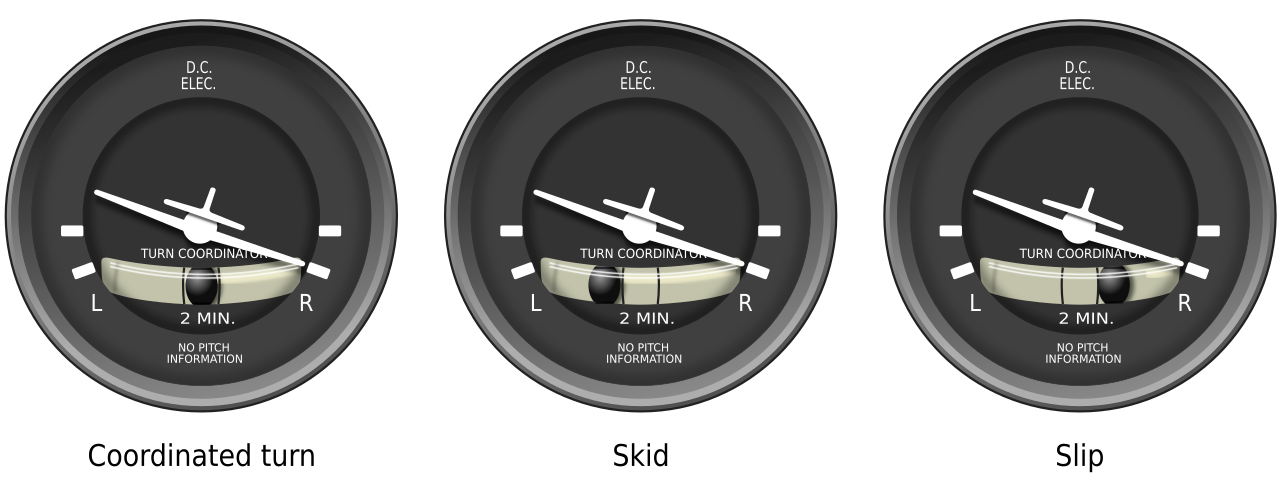
The turn coordinator shows rate of turn and helps pilots stay coordinated. The ball in the coordinator shows lateral balance; side forces deflect the ball if the aircraft is not straight into the wind. Pilots should apply rudder input to the ball deflection to stay coordinated.
A standard rate 360° turn should take 2 minutes, the turn coordinator helps achieve that.
Heading Indicator

Using a directional gyro for precision the heading indicator gives consistent navigation data. A small heading bug makes it easy to set and hold the intended flight path.
As opposed to a magnetic compass which is affected by magnetic deviation the heading indicator gives direction that is much more reliable.
Vertical Speed Indicator
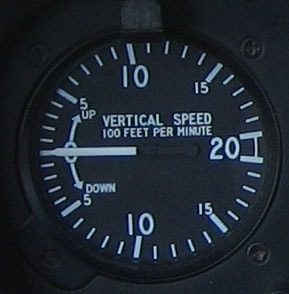
The vertical speed indicator (VSI) shows the rate of climb or descent based on changes in air pressure. It shows the rate in 100 foot per minute increments so pilots can handle the up and down parts of flight.
By using the VSI pilots can maintain specific vertical speeds and shift between altitudes smoothly during a flight.
Engine Controls and Indicators
The throttle, mixture control, and engine RPM gauge are the key instruments to control the engine power of the Cessna 172 engine. By using these levers, a pilot can adjust the engine power for optimal performance at different parts of flight.
Throttle
The throttle lever controls the airflow and fuel in-take and so the power output of the engine. Like an accelerator pedal in a car it controls both airflow and fuel flow so more power when accelerating or climbing and less power when decelerating or descending.
Good throttle management is essential to hold a steady airspeed while having a stable flight.
Mixture Control
The red mixture control lever adjusts the fuel to air ratio for best engine efficiency and power. This is important as an aircraft flies at different altitudes and air densities.
Pilots can use this to fine tune the engine intakes to a precise ratio of reduced fuel and plenty of air. This saves fuel and extends the life of the engine.
Engine RPM
Tachometer shows engine RPM. How many revolutions per minute is the engine turning. It’s good to keep the engine within safe rotational speed. On the ground the max RPM for this engine is 2500 and there is a hard red-line limit of 2700 RPM.
Keeping RPM within these ranges will prevent engine damage and will run smooth.
Fuel System Management
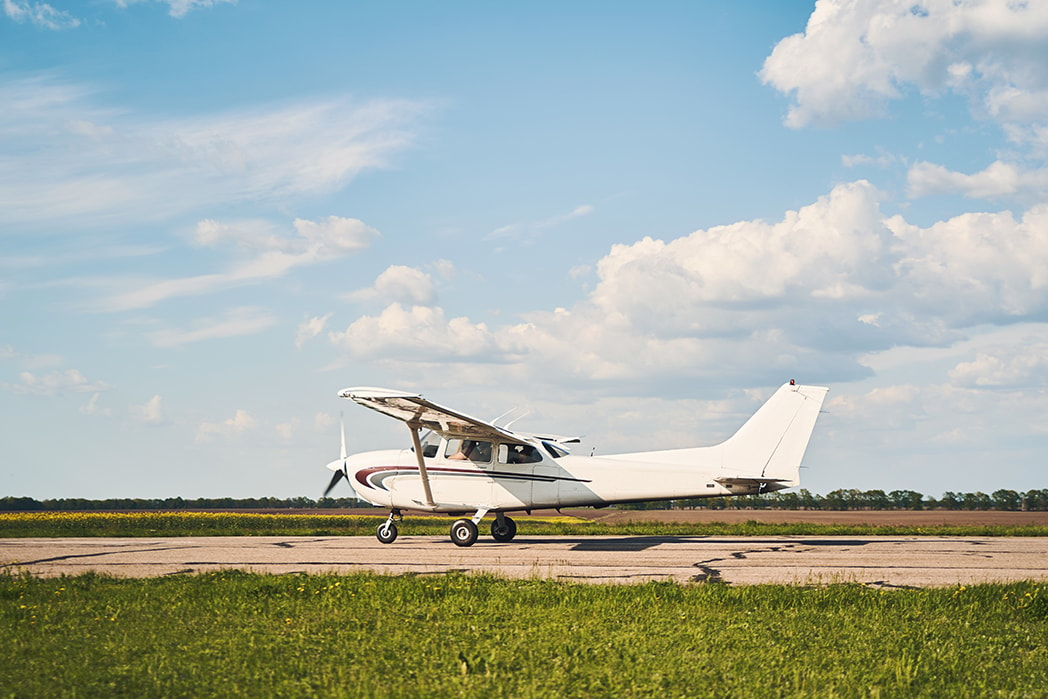
Fuel system management means consistent fuel delivery and peak performance from the engine. The aircraft has two fuel tanks on each wing, each holding 28 gallons. Total of 56 gallons.
The dual tank arrangement and fuel injection system helps to improve performance by keeping fuel flow steady.
Fuel Selector Switch
Pilots use the fuel selector switch to control how much fuel is used, left, right or both. Selecting ‘both’ ensures equal use of fuel from each tank and minimizes the chance of running out of fuel.
Fuel Pump
The electric fuel pump is used during key phases of flight. Located on the front panel in the electrical switching area, this switch turns on the fuel pump to boost fuel pressure at takeoff and landing.
This is a backup system to ensure fuel pressure keeps going even if the engine driven pump fails.
Fuel Shut-Off Valve
Located near the fuel selector, the fuel shut off valve is an important safety item. This valve allows pilots to quickly shut off fuel to the engine in an emergency and reduce fire risk and overall safety.
Because of its placement, it’s handy to grab when you need to use it in a hurry.
Electrical Systems and Lighting

Operational efficiency and safety relies on the electrical systems and lighting of the aircraft. From igniting the engine to running avionics, everything is turned on by flipping the master battery switch.
A range of lights on the aircraft to help with visibility and safety while flying can be switched on from switches behind the yoke. These lights are important for safe flying.
Master Battery Switch
The master battery switch is a key part of the Cessna 172 and initiates all the aircraft’s electrical systems. It does this by connecting the main battery to these systems so engine ignition and avionics work.
To turn on all the systems on the aircraft, you should first turn the master battery switch on to power the whole aircraft.
External Lights
Switches behind the yoke control external lights on the aircraft including landing lights, taxi lights and strobe lights. These help with visibility during takeoff, landing and taxiing and also help other aircraft see the Cessna 172 for position.
Internal Lighting
Internal lighting has modifiable panel lights and cabin lights so pilots can see the instruments. The internal lights can be adjusted for night flying or low light conditions with two knobs.
Communication and Navigation Equipment
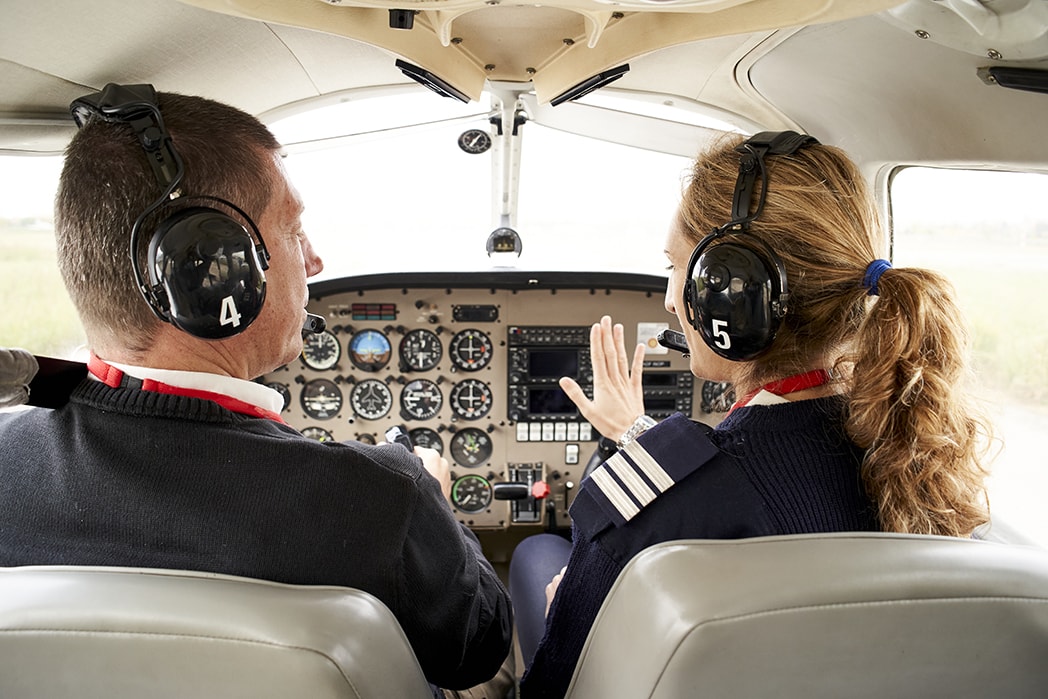
Aircraft have various avionics devices to ensure safe and efficient flight. These include communication radios (COMMs) and navigation radios (NAV1/NAV2) to help pilots talk to air traffic control and navigate the flight.
Within the aviation community, pilots share best practices on the use of these systems, ensuring a higher standard of safety and efficiency across the board.
Communication Radios (COMMs)
Pilots use communication radios to talk to air traffic control and other aircraft to synchronize flight activities. By turning the knobs on the COM panel they can select the frequency and then press a button to engage. This system is important to maintain situational awareness and stick to the flight plan.
Navigation Radios (NAV1/NAV2)
The course deviation indicator tells pilots if the aircraft is off course by showing needle deflection if they deviate from the intended route. Navigation radios NAV1/NAV2 are used for navigation through VOR or ILS signals.
Red OFF flags appear when the aircraft is out of range of these navigation aids so pilots know their navigation position.
Automatic Direction Finder (ADF)
In flight an ADF is a vital navigation instrument that tells you where the needle is pointing towards or away from the radio beacon. It’s great for direction but doesn’t give you the distance to the beacon. But it’s still very helpful for keeping course and situational awareness for pilots.
Autopilot Functions
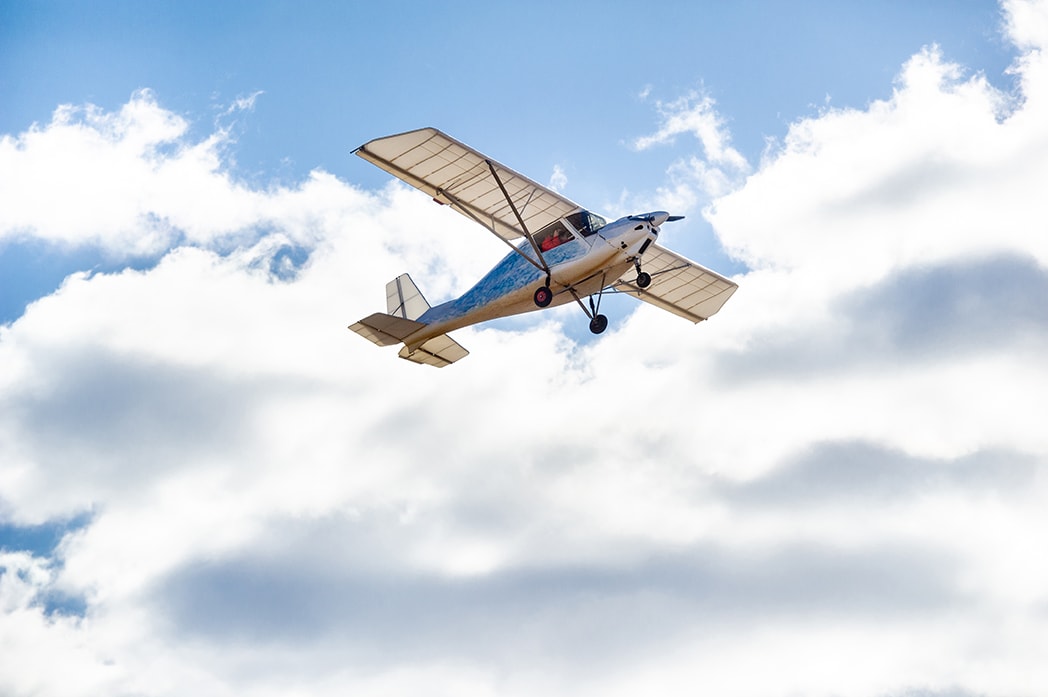
For aircraft that have them, the Cessna 172 autopilot system simplifies flight by automating the controls so less work for pilots and more accuracy. By controlling direction, altitude and rate of climb or descent it allows pilots to focus on other tasks for a smoother and more managed flight.
Lateral Modes
The autopilot has several lateral modes to help you fly headings. Wings Level (ROL) keeps the wings level by holding the current bank until you give it a new command.
To use Navigation Mode (NAV), tune to a station and set the course then arm capture to track VOR or ILS. Once the signal is captured the autopilot will center the CDI needle to the desired course.
Vertical Modes
Aircraft use vertical modes to control rate of climb or descent. In Vertical Speed mode (VS) the aircraft maintains a steady vertical speed. You must adjust power to sustain the desired rate of climb or descent.
When the aircraft reaches the assigned altitude the autopilot will transition to Altitude Hold (ALT) and hold that altitude for a smooth flight.
Safety and Emergency Features
The aircraft has all the safety and emergency features to handle any situation. These include a fire extinguisher the pilot can reach, an auto emergency locator transmitter that activates in case of a crash and an emergency landing system.
Flap Controls
The flap control lever is located just behind the right hand yoke and is used to set the flaps to up, 10°, 20° and 30°. This is important because extending the flaps adds drag and slows the aircraft down – very useful for landings and takeoffs.
Position options available on the flap control lever include:
-
Up
-
10 degrees
-
20 degrees
-
30 degrees
Engaging extended flaps contributes to increased drag, which effectively diminishes flight velocity. This reduction in speed is especially useful during critical phases like landing and takeoff.
Parking Brake
Under the front panel of the cockpit the parking brake lever when engaged stops continuous pressure on the rudder brakes and ensures the aircraft doesn’t move on the ground.
Emergency Procedures
In an emergency situation pilots are trained to use flow patterns to recall the steps instead of relying on written checklists. Take an engine failure after takeoff for example. The pilot must keep the aircraft at 70 knots and follow the procedures for a safe landing.
When faced with an electrical fire turn off the master switch and get down as soon as possible.

Frequently Asked Questions
What are the primary flight instruments in the Cessna 172?
The main flight instruments in the Cessna 172 are airspeed, attitude, altimeter, turn coordinator, heading, and vertical speed.
These are the ones you need to keep an eye on.
How does the fuel system work in a Cessna 172?
The fuel system on the Cessna 172 has two wing tanks, each holding 28 gallons, and a lever to select the fuel tank. An electric fuel pump helps keep the pressure up when you need it most.
What is the role of the master battery switch?
The master battery switch is the key to turning on the aircraft’s electrical systems by connecting the main battery to them. This allows engine starts and turns on avionics and other essential electrical bits.
How do communication radios function in the Cessna 172?
Pilots in the Cessna 172 use communication radios to establish contact with air traffic control and other aircraft. They can do this by choosing the appropriate frequency on the COM panel and then pressing a button to activate it.
The key is to maintain clear channels of communication while flying!
What are the emergency procedures for an engine failure?
If the engine fails, it is imperative to keep the aircraft at a speed of 70 knots. During this time, check that the fuel selector is in the correct position and turn off the fuel pump as you get ready for an emergency landing.
It’s important to remain composed and adhere to prescribed safety protocols during such events.
